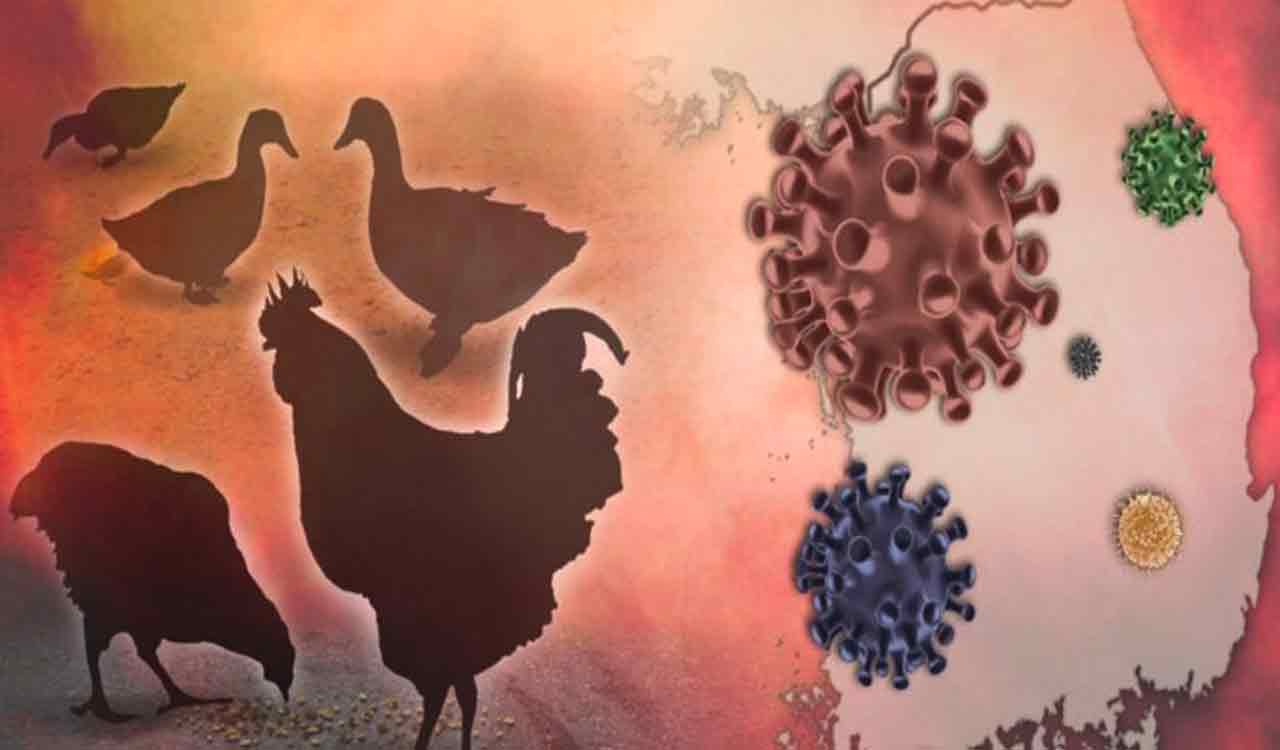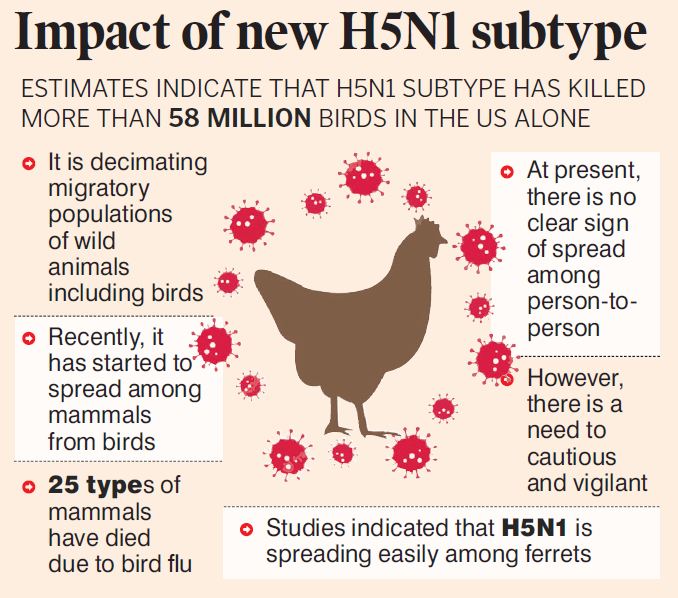
The H5N1 subtype raises concerns over its ability to jump to humans effortlessly
Published Date – 12:45 AM, Thu – 25 May 23

In the last few months, a highly pathogenic and lethal subtype of avian influenza virus H5N1 has been killing millions of animals around the world. Studies in multiple countries by researchers has indicated that the H5N1 subtype has the potential to efficiently spread from birds to mammals, raising concerns among public health specialists, over the possibility of virus developing an ability to jump to humans effortlessly.
At present, there is no risk of a human pandemic from the H5N1 subtype. However, given the rate at which this (H5N1) virus is spreading and the past experience gained from the Covid pandemic, experts urge people to be cautious and vigilant.
The worry over the massive spread of H5N1 among birds and other mammals is due to its high risk factor. Based on estimations, the H5N1 fatality rate among humans is between 50 and 60 percent, which is severe given that Covid-19 fatality rate (depending on the country) hovers between 1 percent and 4 percent.
A few days ago, in UK, two-persons tested positive for H5N1. The development prompted Chief Medical Advisor for UK Health Security Agency (UKHSA) to clarify that there is no clear evidence that H5N1 is spreading quickly among humans.
“Current evidence suggests that the avian influenza viruses we’re seeing circulating in birds around the world do not spread easily to people. However, we know already that the virus can spread to people following close contact with infected birds… Globally there is no evidence of spread of this strain from person to person, but we know that viruses evolve all the time and we remain vigilant for any evidence of changing risk to the population,” Professor Susan Hopkins, Chief Medical Advisor, UKHSA, was quoted in the UK government website (gov.uk).
Rise of Avian Influenza
While not many such cases have been reported in India, but across the globe for the past 18 months the new subtype of H5N1 had a devastating impact on farmed and wild bird populations. The H5N1 has started impacting mammals like foxes, sea lions, domesticated dogs and cats. As a result, there is a clear risk that different subtypes of H5N1 combining and jumping to humans.
In February, the World Organization for Animal Health (WOAH) reacted to the risk of H5N1. “Since October 2021, an unprecedented number of outbreaks have been reported in several regions of the world, reaching new geographical areas and causing devastating impacts on animal health and welfare. A rising number of H5N1 avian influenza cases have been reported in several mammalian animals both terrestrial and aquatic, causing morbidity and mortality. The current situation highlights the risk that H5N1 may become better adapted to mammals, and spill over to humans and other animals”.
Given the experience with Covid-19, where an influenza virus of questionable origin managed to trigger a worldwide pandemic that lasted for three-years and in the process killed many, public health organisations and experts have urged people to be cautious and vigilant.






